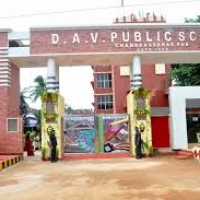Dav Public School in Bhubaneswar, Odisha Admission, Fees Structure

Where is Dav Public School ?
Dav Public School is Located in Bhubaneswar , Odisha, India
Address of Dav Public School, Bhubaneswar
P/O - Sailashree Vihar
Bhubaneswar Khurda
Odisha - 751021
India
+916742740551
+916742740651
davcspur@gmail.com
How do I contact Dav Public School?
Call at +916742740551 to contact Dav Public School
About Dav Public School
Empowering inquisitive minds towards compassionate Global Citizenship. Mahatma Hansraj established the D.A.V. College Trust and Management Society on 31st January 1886 after the death of Swami Dayanand. It is now the oldest and biggest non-governmental educational organization in India. It covers broadly the entire spectrum of educational activity in the country. The society has developed a chain of institutions from Kashmir to Kanyakumari and from Manipur to Rajasthan with a view to meet the demand for enlightening and progressive education based on the requirements of contemporary times with emphasis on values of life. It includes over 750 public and aided schools, colleges in the faculties of Arts, Science and Commerce, Education , Law, Technology, Ayurveda, Medicine, Pharmacy & Management, It has completed one hundred and twenty two years of its academic services. Apart from providing the traditional value education, it has also contributed to the society through the establishment of Hospitals, Libraries and Research Centres. Dr. Ayodhya Nath Khosla, took the initiative to start the DAV Movement in Orissa in 1968 when he was the Governor During his tenure, he initiated several schools of DAV Society in the nook &corner of the state to spread literacy.
With many 6th-13th century CE Hindu temples, which span the entire spectrum of Kalinga architecture, Bhubaneswar is often referred to as a "Temple City of India" With Puri and Konark it forms the 'Swarna Tribhuja' ("Golden Triangle"), one of eastern India's most visited destinationsBhubaneswar replaced Cuttack as the capital on 19 August 1949, 2 years after India gained its independence from Britain The modern city was designed by the German architect Otto Königsberger in 1946 Along with Jamshedpur and Chandigarh, it was one of modern India's first planned cities.
Khorda has a population of around more that 22 lacs according to 2011 census Bhubaneswar and Cuttack are often referred to as the 'twin cities of Odisha' The metropolitan area formed by the two cities had a population of 17 million in 2011 Recent data from the United Nations released in 2016 states that Bhubaneswar's metro area has a population of around a million people.
Bhubaneswar is categorised as a Tier-2 city
Odisha has a coastline of 485 kilometres (301 mi) along the Bay of Bengal The region is also known as Utkala and is mentioned in India's national anthem, "Jana Gana Mana" The language of Odisha is Odia, which is one of Classical Languages of IndiaThe ancient kingdom of Kalinga, which was invaded by the Mauryan emperor Ashoka (which was again won back from them by king Kharavela) in 261 BCE resulting in the Kalinga War, coincides with the borders of modern-day Odisha The modern boundaries of Odisha were demarcated by the British Indian government and the "Province of Orissa" was established on 1 April 1936, it consisted of Odia (Oriya) speaking districts.
The first of April is celebrated as Utkala Dibasa Cuttack was made the capital of the region by Anantavarman Chodaganga in c 1135, after which the city was used as the capital by many rulers, through the British era until 1948 Thereafter, Bhubaneswar became the capital of OdishaThe economy of Odisha is the 16th-largest state economy in India with ₹5.
33 lakh crore (US$75 billion) in gross domestic product and a per capita GDP of ₹116,614 (US$1,600) Odisha ranks 23rd among Indian states in human development index